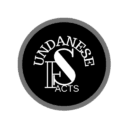History of the Galunggung Kingdom: From Kabuyutan to a Sovereign Entity
Introduction
The Galunggung Kingdom, located in what is now Tasikmalaya Regency, West Java, Indonesia, holds a profound and fascinating place in Sundanese history. Significantly, the kingdom’s name is derived from Mount Galunggung, a volcanic landmark that remains culturally symbolic even today. Although the mountain’s eruptions, such as the notable event on April 5, 1982, are well-documented, the history of Galunggung stretches far beyond this. In fact, it originated as a kabuyutan—a sacred and revered site central to ancient Sundanese spirituality.
Kabuyutan Galunggung: Sacred Beginnings
Initially, Galunggung was a kabuyutan, a sacred location exclusively dedicated to religious practices. Interestingly, these kabuyutans were deeply intertwined with the Sundanese belief system, serving as places of prayer and offerings managed by priests. For instance, Kabuyutan Galunggung, located near Mount Galunggung in the Leuwisari District, held an independent status within the larger spiritual framework of the Sunda Kingdom.
Furthermore, kabuyutans were often situated in remote locations such as dense forests or mountain slopes. This isolation emphasized their sacred nature and preserved their tranquility. According to the Amanat Galunggung manuscript and historical inscriptions like the Geger Hanjuang inscription, Kabuyutan Galunggung was an essential spiritual center, underscoring its cultural and historical importance.
Moreover, kabuyutans played pivotal roles in the Sunda Kingdom’s spiritual structure. While some kabuyutans operated under the administration of kawikuan (monastic settlements), others, such as Kabuyutan Galunggung, maintained independence. This distinction highlights their unique function as both spiritual hubs and centers of cultural heritage.
Establishment of the Galunggung Kingdom
As history unfolded, Kabuyutan Galunggung underwent a transformation that marked its transition into the Galunggung Kingdom. This monumental change was driven by the coronation of Batari Hyang Janapati, a significant event documented in the Geger Hanjuang inscription. Specifically, the coronation occurred on August 21, 1111 CE (13th Bhadrapada 1033 Saka), a date widely recognized as the kingdom’s official founding day.
Importantly, the teachings of the Amanat Galunggung manuscript reveal the values upheld by the kingdom. For example, the text emphasizes the importance of adhering to ancestral customs, cultivating prosperity, and practicing religious teachings. Through these principles, the Galunggung Kingdom combined spirituality and governance to create a harmonious society.
Integration into the Sunda Kingdom
Although the Galunggung Kingdom achieved political status, it remained firmly integrated within the federal framework of the Sunda Kingdom. Notably, this structure allowed regional kingdoms to retain autonomy while recognizing the overarching authority of the Tohaan di Sunda (King of Sunda).
Moreover, historical texts such as the Bujangga Manik manuscript provide valuable insights into this system. For instance, the manuscript details the territorial boundaries of the Sunda Kingdom and describes its administrative organization. It notes how regional kingdoms like Galunggung functioned as vital components of the broader governance structure.
Additionally, the Sunda Kingdom’s federal system promoted a balance between local traditions and centralized administration. Consequently, this arrangement allowed kingdoms like Galunggung to flourish while contributing to the unity of the Sunda Kingdom.
The Enduring Legacy of the Galunggung Kingdom
Today, the legacy of the Galunggung Kingdom endures through historical artifacts, manuscripts, and cultural narratives. For example, inscriptions and texts like Amanat Galunggung and the Geger Hanjuang inscription offer a glimpse into the kingdom’s spiritual and cultural significance.
Equally important, the kingdom’s origins as a kabuyutan reflect the deep connection between religion and governance in Sundanese history. This interplay is further highlighted by the kingdom’s integration into the federal structure of the Sunda Kingdom, showcasing a model of unity amidst diversity.
Furthermore, modern historians and researchers continue to preserve the memory of the Galunggung Kingdom through archaeological studies and cultural preservation initiatives. These efforts ensure that its rich history remains an integral part of Indonesia’s heritage.
Conclusion
In summary, the story of the Galunggung Kingdom is a testament to the richness of Sundanese history and culture. Beginning as the sacred Kabuyutan Galunggung and transitioning into a political entity, the kingdom exemplifies the intertwining of spirituality and governance. Moreover, its integration into the Sunda Kingdom underscores the importance of collaboration and unity in ancient times. Ultimately, the Galunggung Kingdom’s legacy continues to inspire and educate, preserving its place in Indonesia’s vibrant cultural tapestry.
Read More:
Best Tourist Spots in West Java for a Perfect Family Vacation
References
- History of Mount Galunggung and Its Role in Local Culture
Tasikmalaya.iNews.id – A comprehensive overview of Galunggung’s history and its cultural significance. - Kabuyutan Galunggung and the Sunda Kingdom’s Spiritual Structure
Analysis of kabuyutan in historical manuscripts, focusing on the Sunda Kingdom’s governance







